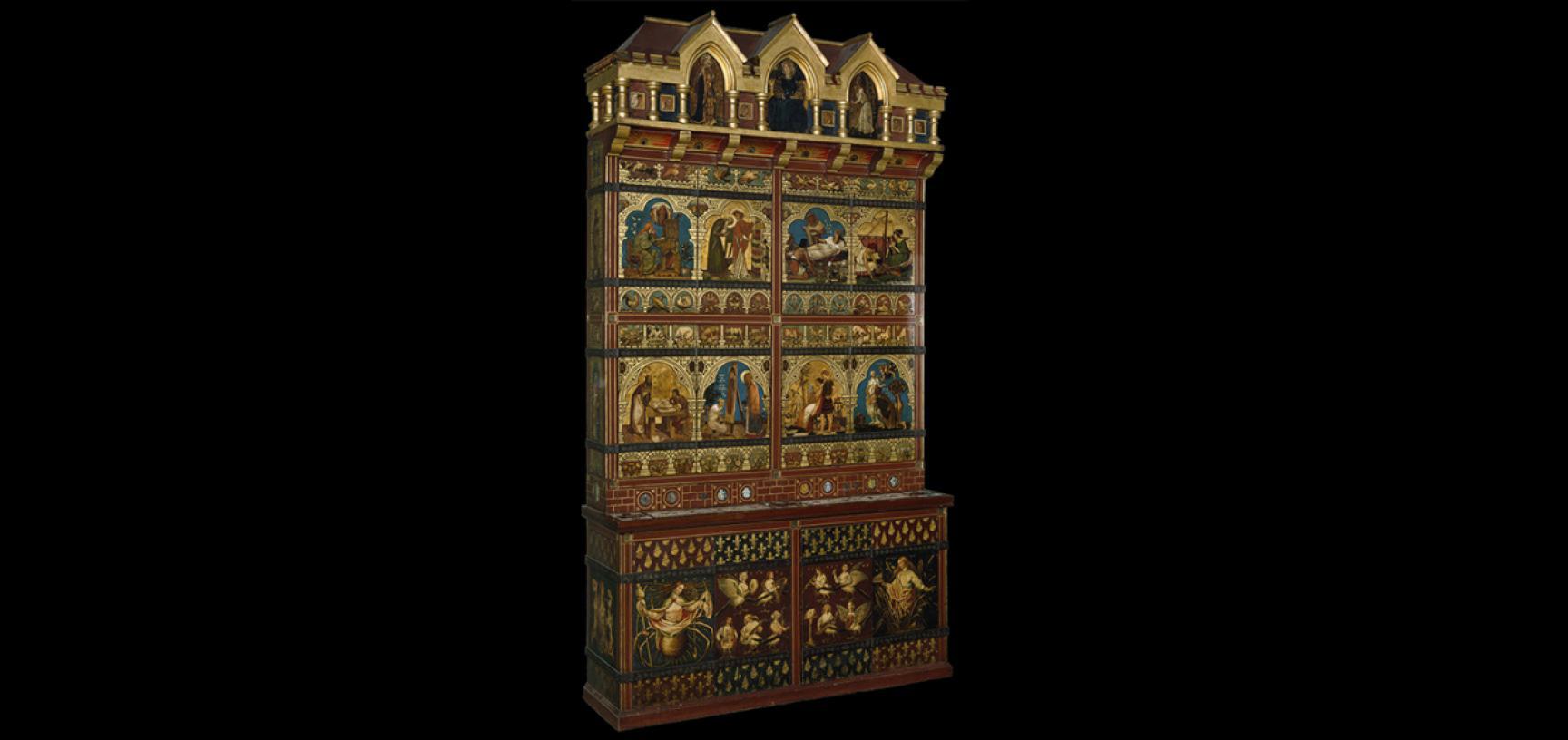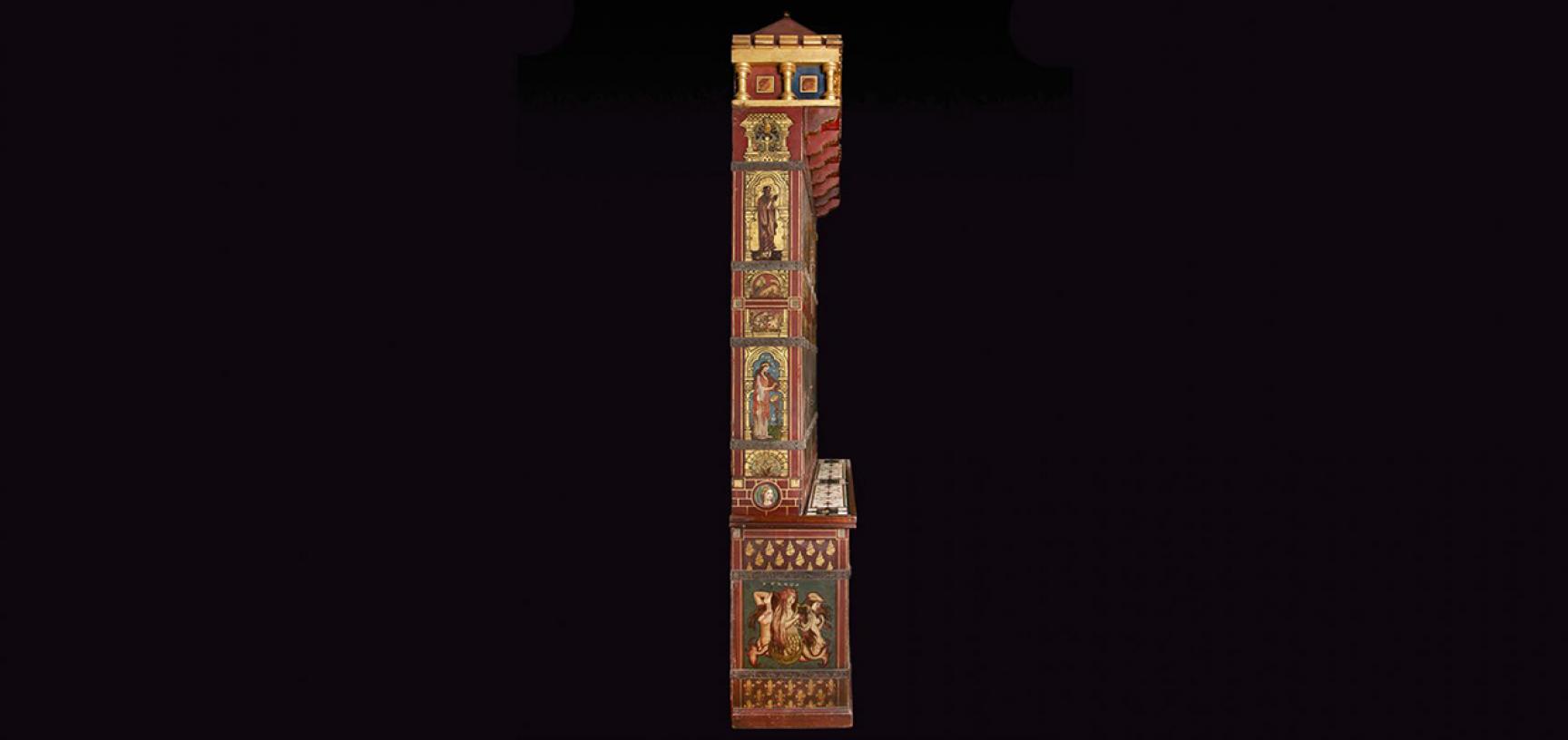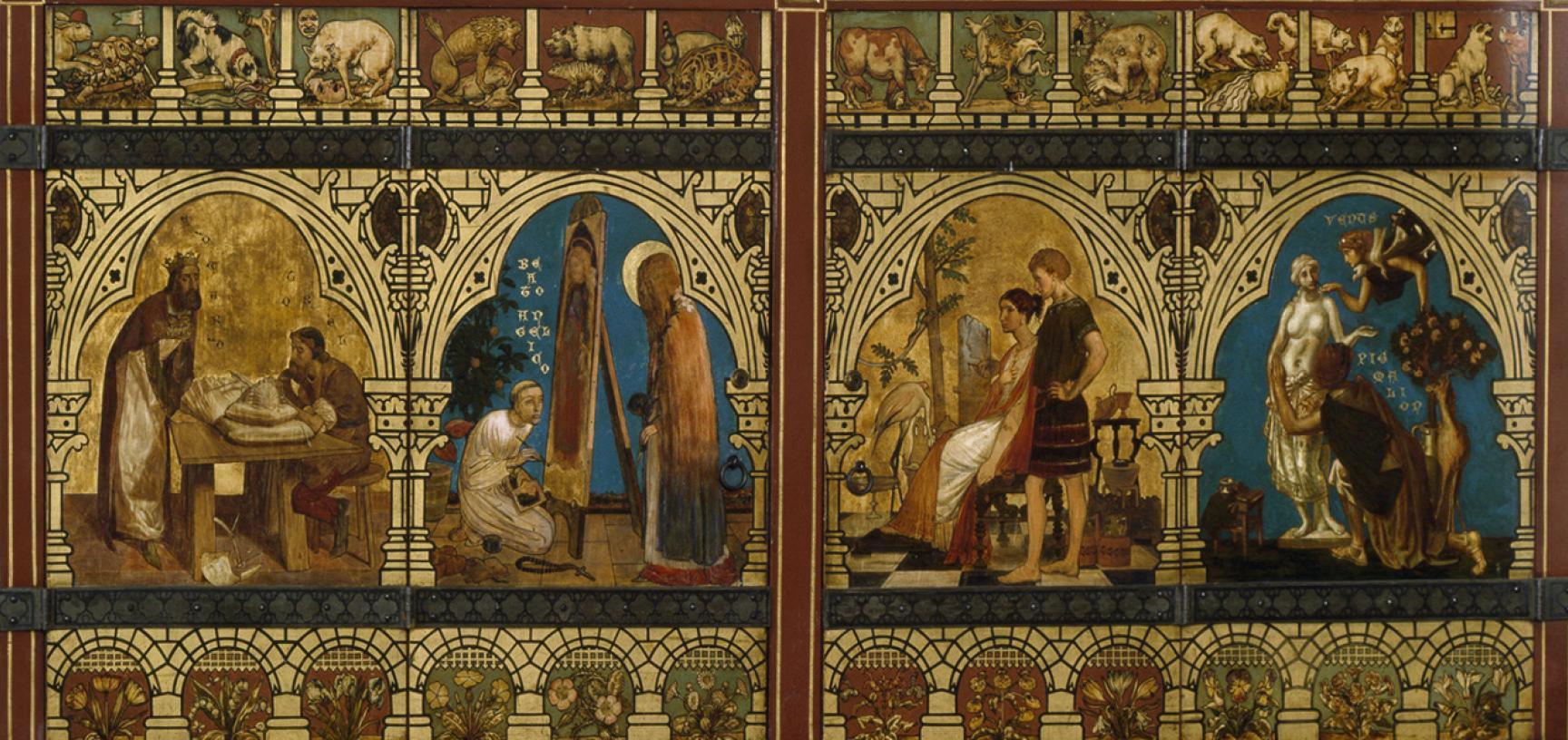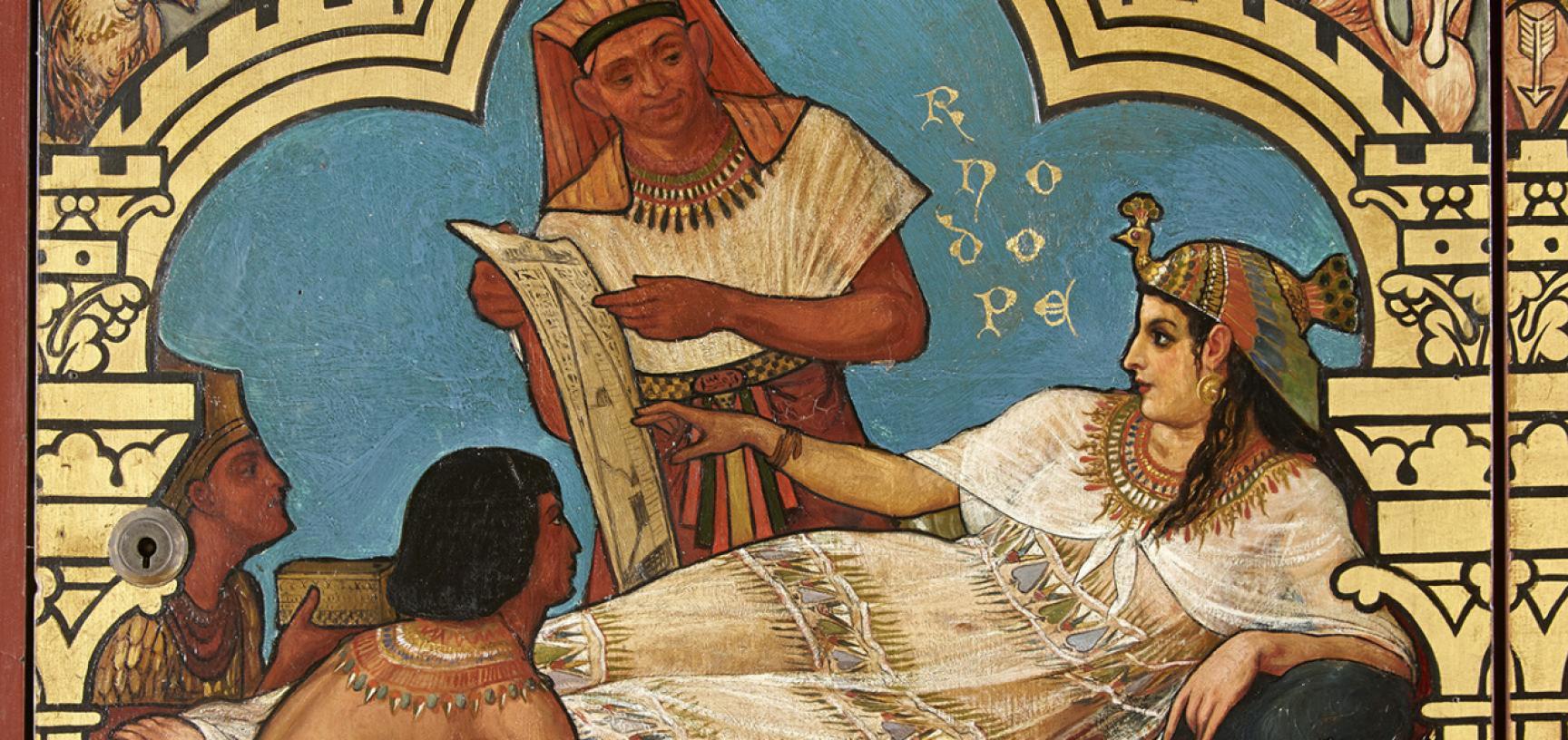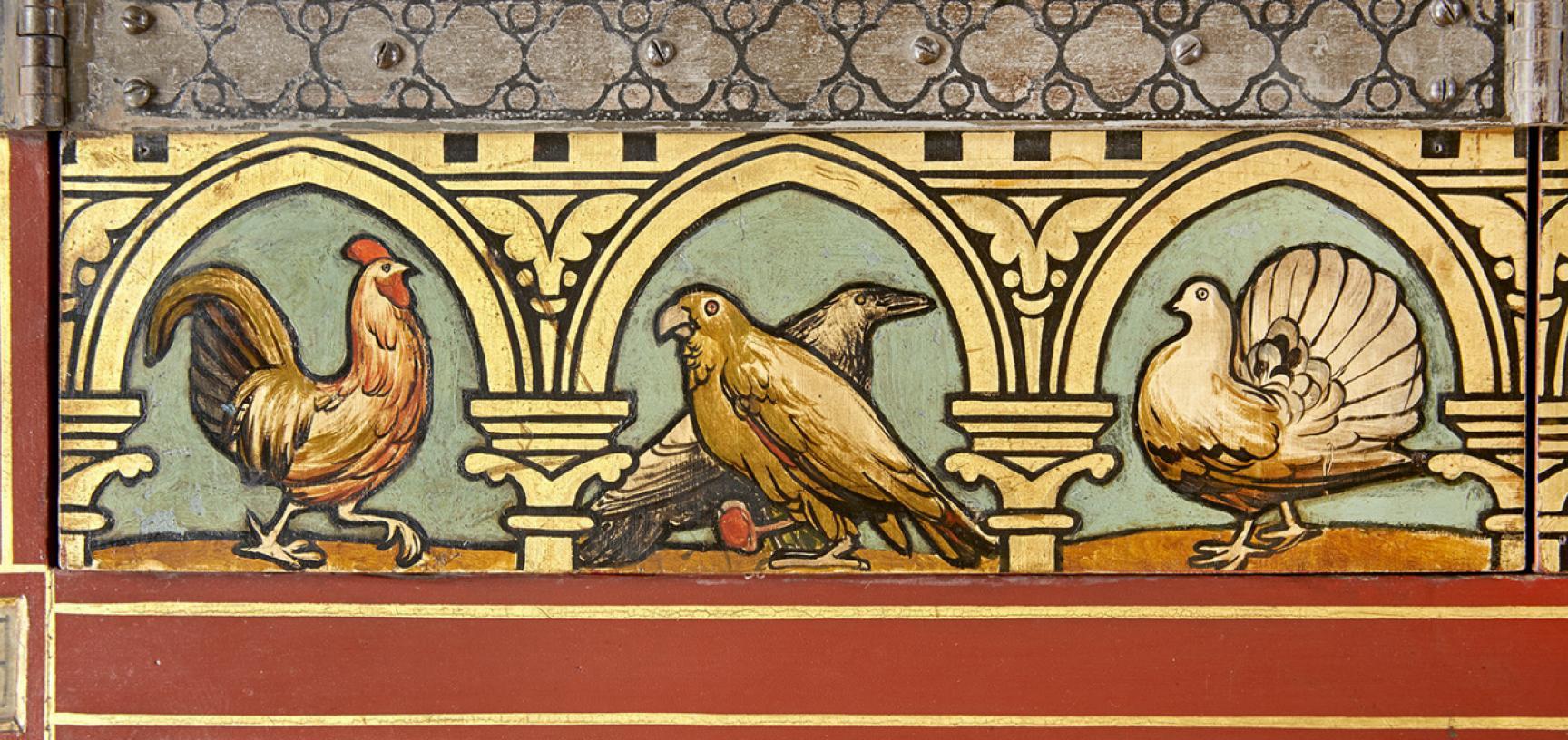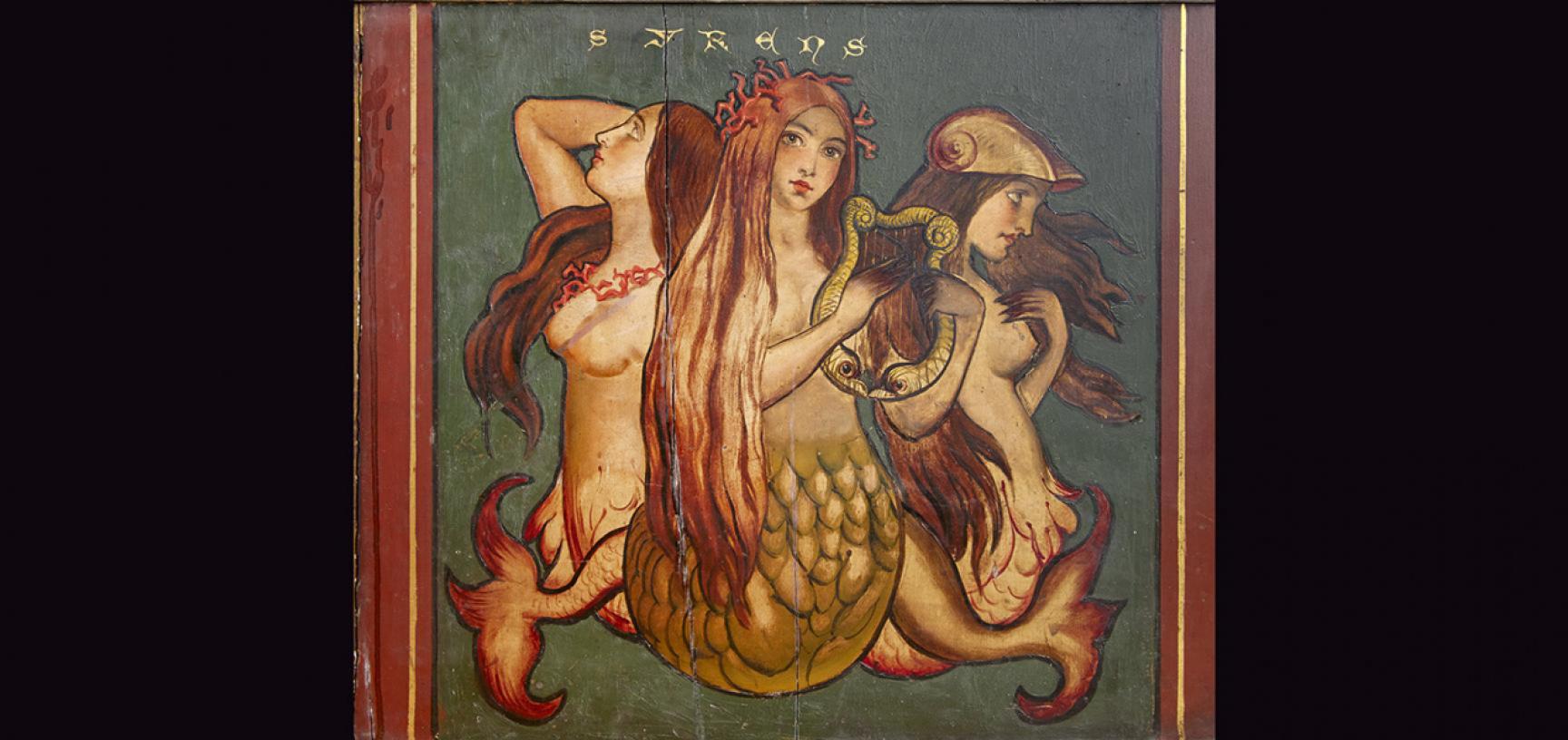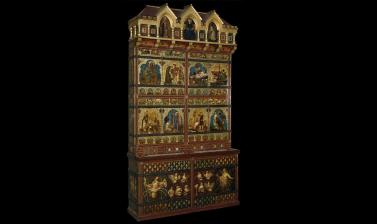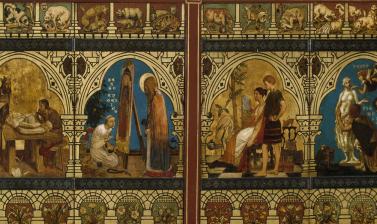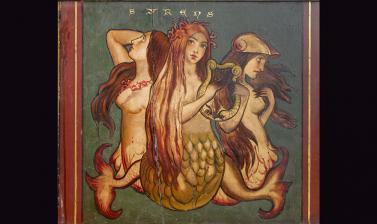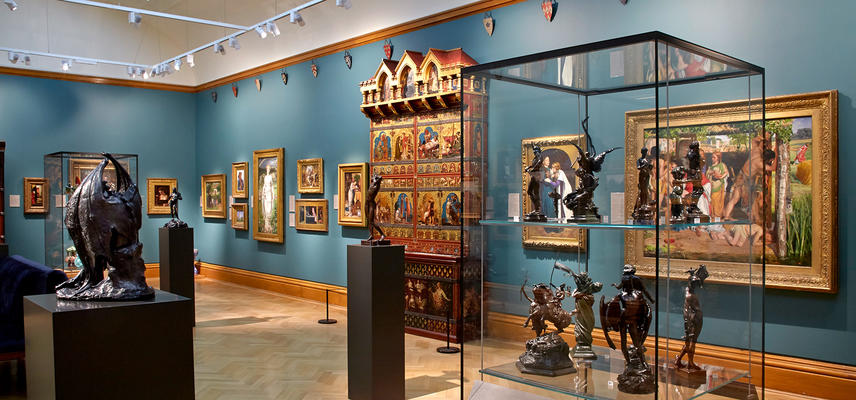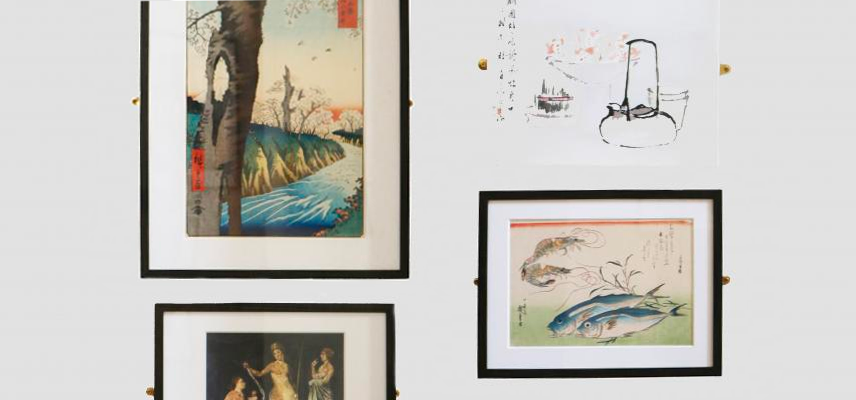GREAT BOOKCASE
Creating a medieval world that never was
Enormous, elaborate and highly decorated, the Great Bookcase was made to hold art books in the London office of William Burges (1827–81), the eminent Victorian architect and designer. Work on it began around 1859 and was completed by 1862, when it was included in the Medieval Court at the International Exhibition in London. Although the design was based on surviving medieval furniture, the bookcase remains a purely 19th-century creation.
Burges believed that, in addition to serving a practical purpose, furniture should also tell a story. Here the emphasis is on the painted scenes and decoration. Fourteen leading artists worked on the Great Bookcase: Edward Burne-Jones, John Anster Fitzgerald, Henry Holiday, Stacy Marks, Albert Moore, Thomas Morton, Edward Poynter, Dante Gabriel Rossetti, Charles Rossiter, Frederick Smallfield, Simeon Solomon, William Frederick Yeames, Frederick Weeks, Nathaniel Westlake and Burges himself.
The decoration is divided into Christian themes on the left side of the cabinet and pagan themes on the right side. The large number of artists who worked on the Great Bookcase was unprecedented. Although the paintings are of the highest quality, the cabinet-making evidently was not: the bookcase collapsed in 1878 and had to be substantially rebuilt. Despite acknowledging that the bookcase was ‘not acceptable to present day taste’, Kenneth Clark, then Keeper of the Western Art Department, purchased it for the Ashmolean in 1933.
The Great Bookcase, William Burges (1827–81)
Oak, carved, painted and gilt
317.5 x 173.9 x 49.5 cm
Purchase, 1933
View on our online Collection Online Site: WA1933.26
License this image - visit the Ashmolean Image Library


